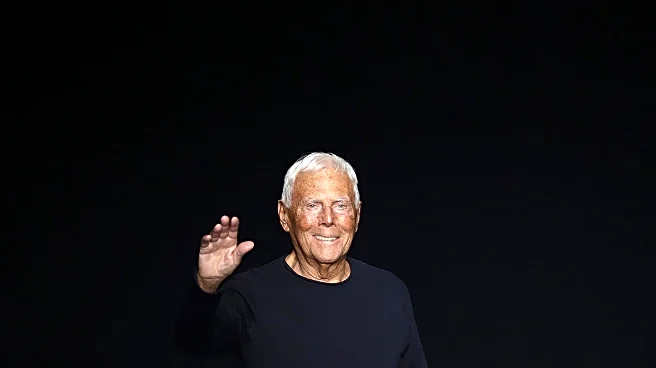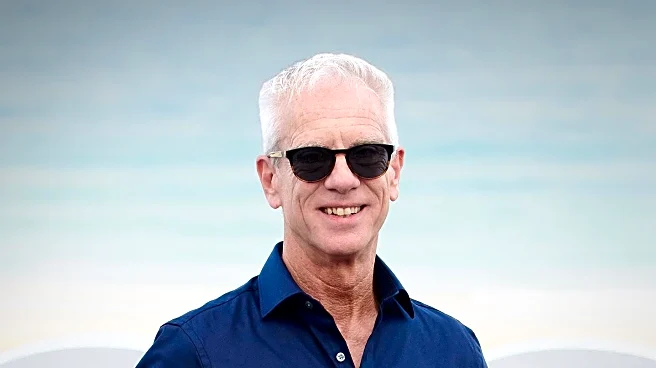What's Happening?
Giorgio Armani, the renowned Italian fashion designer, has announced plans for a gradual transition of responsibilities within his company. This decision comes after Armani, aged 91, missed recent Milan and Paris fashion shows due to health issues. Armani, who serves as both creative director and CEO, intends to hand over his duties to close collaborators and family members, including Leo Dell’Orco, head of men's design, and other trusted team members. Armani emphasized the importance of an organic succession process, avoiding any abrupt changes. The company, founded in 1975 with his late partner Sergio Galeotti, reported revenues of €2.3 billion in 2024.
Why It's Important?
Armani's succession plan is significant for the fashion industry, as it ensures continuity in one of the world's most influential fashion houses. The gradual transition aims to maintain the brand's legacy and stability, which is crucial given its substantial economic footprint. Stakeholders, including employees and investors, stand to benefit from a smooth transition, minimizing disruptions in operations and creative direction. The move also highlights the challenges faced by aging leaders in maintaining their roles in high-pressure industries, prompting discussions on leadership succession planning.
What's Next?
The succession process will likely involve increased responsibilities for Armani's chosen successors, particularly Leo Dell’Orco and family members. The industry will be watching closely to see how these changes affect the brand's creative output and market position. Potential reactions from competitors and market analysts may focus on the impact of leadership changes on Armani's strategic direction and innovation. The transition could also influence other fashion houses to reassess their own succession strategies.
Beyond the Headlines
Armani's approach to succession reflects broader themes in leadership and legacy within the fashion industry. It raises questions about the balance between tradition and innovation, as new leaders may bring fresh perspectives while preserving the brand's heritage. The ethical dimension of succession planning, ensuring fair opportunities for long-serving employees, is also noteworthy. This development may inspire discussions on the cultural significance of leadership transitions in creative fields.














